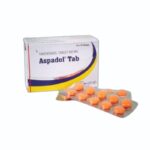Web development is the backbone of the digital age, transforming ideas into interactive, user-friendly experiences. From small personal blogs to sprawling e-commerce platforms, web development is an ever-evolving craft that combines creativity, technical expertise, and problem-solving. Here, we’ll explore what web development entails, why it’s exciting, and how to start your journey.
What Is Web Development?
Web development is the process of creating websites or web applications. It involves a mix of programming, design, and maintenance to ensure that websites function effectively and look great. Web development is generally divided into three main areas:
Frontend Development: This area concerns the visual and interactive elements that users see and interact with, such as buttons, animations, and layouts. It uses languages like HTML, CSS, and JavaScript.
Backend Development: Concerned with the server side, databases, and application logic that power the functionality of a website. The languages generally used are Python, Ruby, PHP, and frameworks such as Node.js.
Full-Stack Development: Includes both front-end and back-end development; thus, it covers the whole process of web application development.
Why Web Development Is Exciting
Creativity Meets Technology
Web development is where art meets science. While the technical part makes it work, the creative side is all about user experience and aesthetics.
Infinite Learning Opportunities
Constant learners are found among web developers because of constantly updated technologies. This is the field of great dynamic frameworks, constantly updated tools, and evolving best practices that make every day interesting and different from the last.
Varied Careers Paths
Freelancing or joining big shots: There is a sea of possibilities where one can fit in according to the way it is put across by this statement. They might be narrow niches or generalized as a full-stack developer.
How to Get Started with Web Development
Learn the Basics
Start with HTML–structure, CSS–styling, and JavaScript–interactivity. These three form the very basis of web development.
Practice, Practice, Practice
Create simple projects such as personal portfolios, calculators, or blogs to help you improve. Websites like freeCodeCamp and The Odin Project have great tutorials and project-based learning.
Learn Version Control
Tools such as Git and GitHub enable you to work efficiently on code management and collaboration.
Learn Frameworks and Libraries
For frontend, look into React, Angular, or Vue.js. For backend, try Django, Flask, or Express.js.
Master Debugging
Learn how to find and fix bugs in your code. Browser developer tools and debugging tools are your best friends.
Stay Connected
Join online communities like Stack Overflow, Reddit‘s r/web development, or participate in hackathons to network and learn from others.
The Future of Web Development
With artificial intelligence, augmented reality, and responsive design pushing the boundaries of the web, developers are truly leading the charge in innovation. Whether it is crafting immersive user experiences or ensuring accessibility for all, the scope is endless.
Web development is more than coding; it’s about storytelling, problem-solving, and building bridges in a digital-first world. So, dive in, experiment, and let your creativity flow—you’re shaping the future one line of code at a time.
Related Article:
The Importance of Web Design in El Paso Crafting Digital Experiences for Local Businesses
The Importance of Custom Web Design and Development in Today’s Digital Landscape



